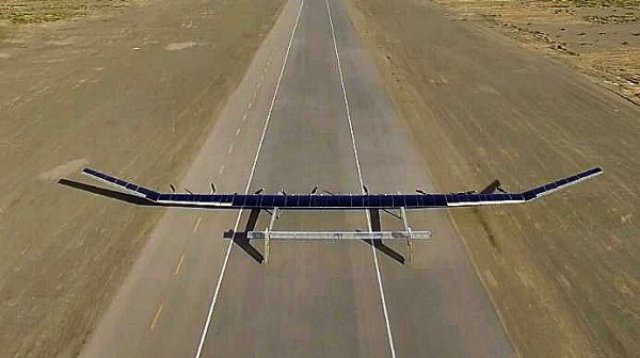China is developing an airborne mobile Wi-Fi hub in near space with solar-powered drones. The Feiyun (“Flying Cloud”) project is able to secure emergency communication for more than one week and proof of concept is expected to be demonstrated before the end of year.
The recent and once secret flight of Caihong-T4 (CH-T4) — China’s largest unmanned solar-powered drone — to an altitude of 20,000 meters (20 km) took it into the region of the atmosphere called “near space” where it will serve in the future as a “quasi-satellite.”
Near space is the region of Earth’s atmosphere that lies between 20 km and 100 km (65,000 and 328,000 feet) above sea level. It includes the stratosphere, mesosphere and the lower thermosphere.
The feat attained by CH-T4, which remains unverified, led Chinese state-controlled media to dub the robot plane China’s first “near space solar drone.” State media said China is only the third country to master near space solar drone technology after the United States and the United Kingdom.
It also said CH-T4 will serve as a “quasi-satellite” in the future, and will supplant some functions of telecommunication satellites in providing data relay services.
The solar drone is also expected to be used as “an airborne mobile Wi-Fi hub” to provide convenient mobile telecommunication and Internet access for remote areas and islands, saving the huge construction and maintenance costs of traditional communication means.
The primary mission for the CH-T4, however, will be to gather military and other types of military-related information from around the world, said Chinese officials.
China Aerospace Science and Technology Corporation, which leads the project team that developed the drone, said CH-T4 flew smoothly in near space for over 15 hours under control, finishing its scheduled flight path before landing safely back in China.
CH-T4 is a twin fuselage; cranked wing unmanned aerial vehicle with twin vertical rudders. Its wingspan extends 40 meters but only weighs between 400 kg and 450 kg.
The solar drone owes its lightness to the use of carbon fiber and plastic components. The use of these materials also means the UAV’s eight electric propellers can drive the aircraft to speeds approaching 200 km/h.
Solar drones like the CH-T4 can perform well in near space and it’s expected that the aircraft might be able to fly continuously for months or even longer in the future, said Li Guangjia, project director.
He said the project team had to overcome challenges in key technological fields such as aerodynamics, flight control and the efficient use of energy during the development of CH-T4.
According to Ma Hongzhong, director of UAV Research Institute at the Third Academy of China Aerospace Science and Technology Corporation, the near-space solar drone usually flies at an altitude of at least 20 km for several days. It will function as a “quasi-satellite” in the future, being able to provide remote sensing and telecommunication services.
Compared with low-orbit satellites and high-orbit satellites, near-space solar drones are cheaper to build and maintain and have a higher spatial resolution.
The research team will focus on the development of the drone’s core technologies, including energy usage, power generation, pneumatic systems, and structure, so as to carry out flight experiments as soon as possible.
Photo: CH-T4 solar drone taking-off – Xinhua
Source: China Topix

